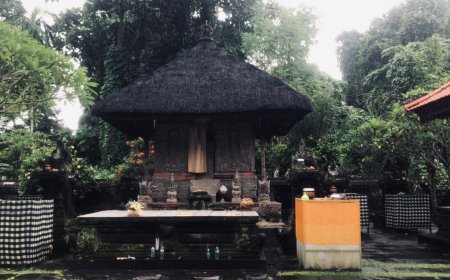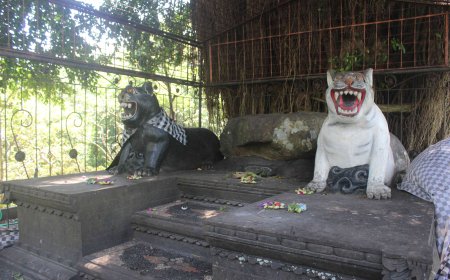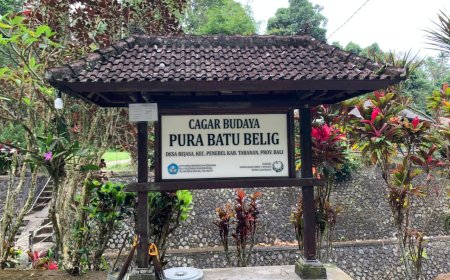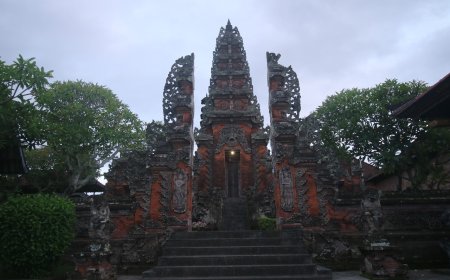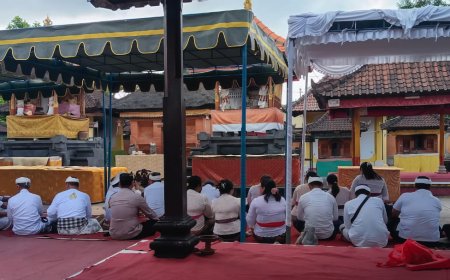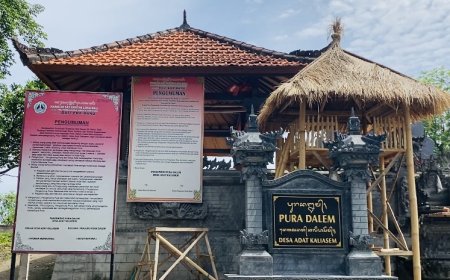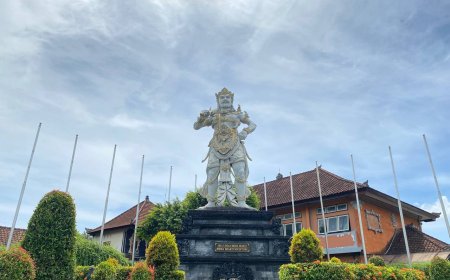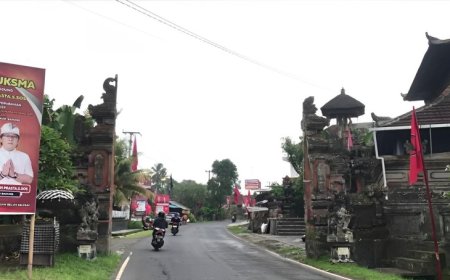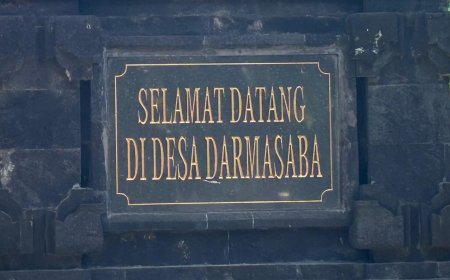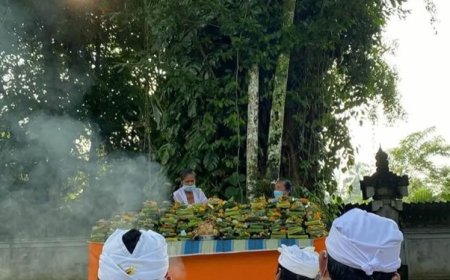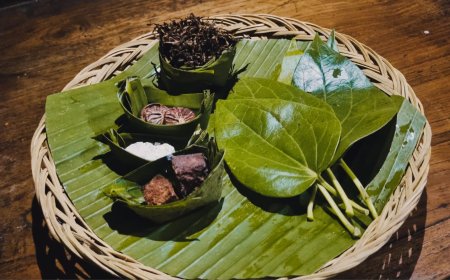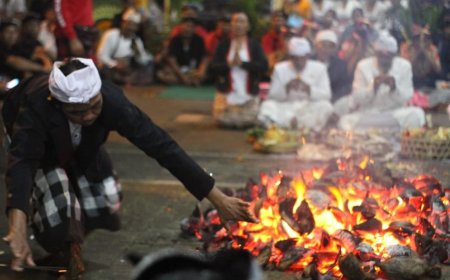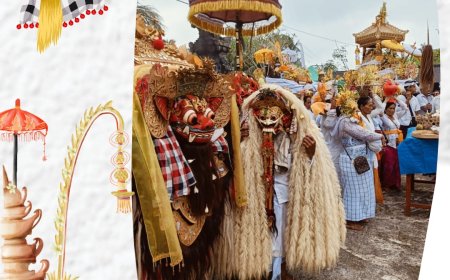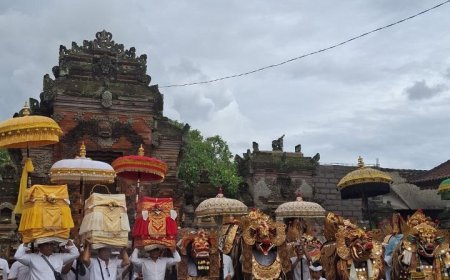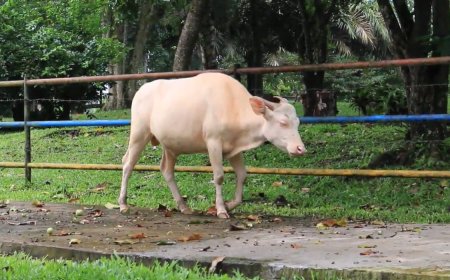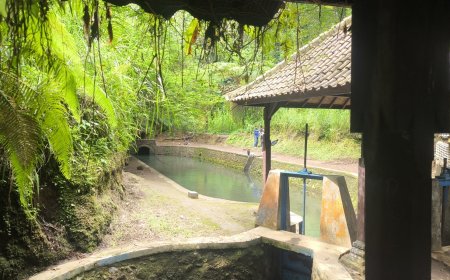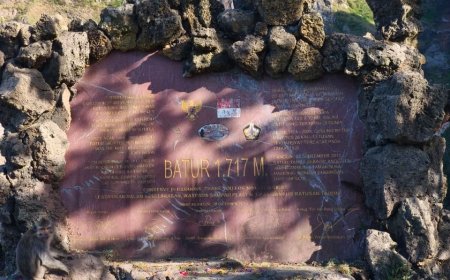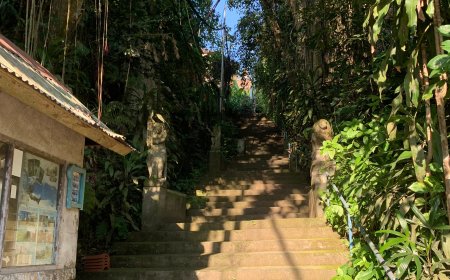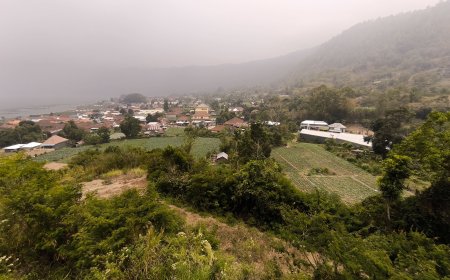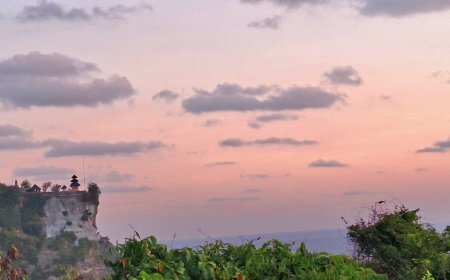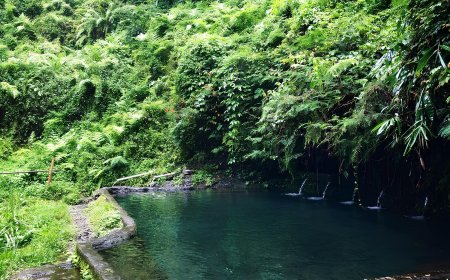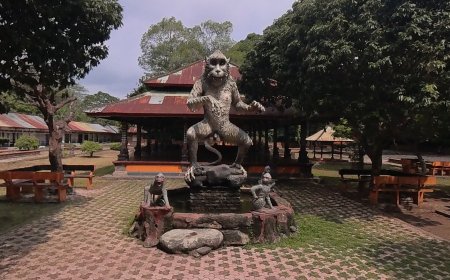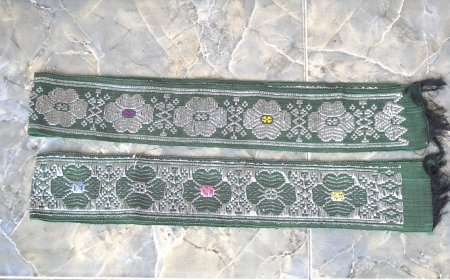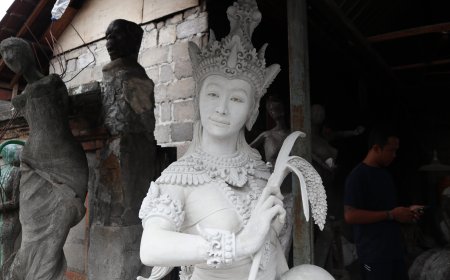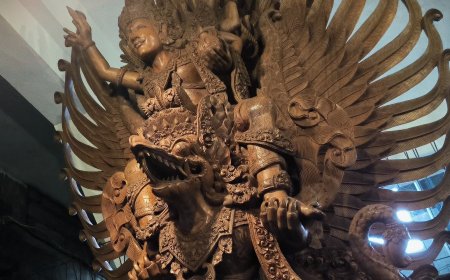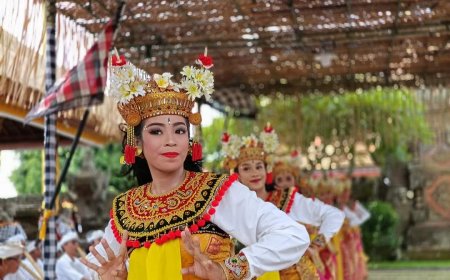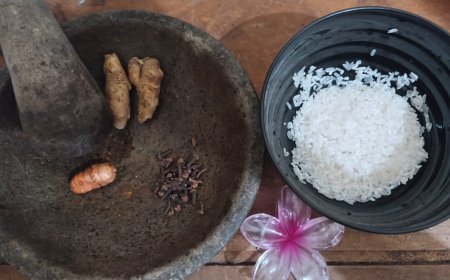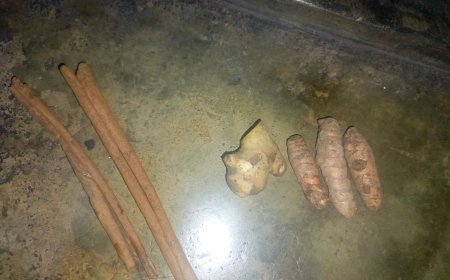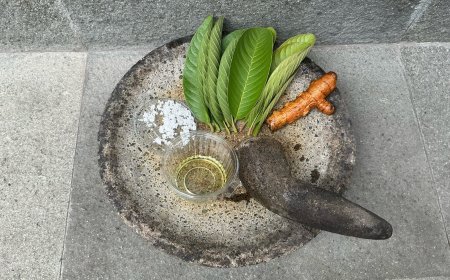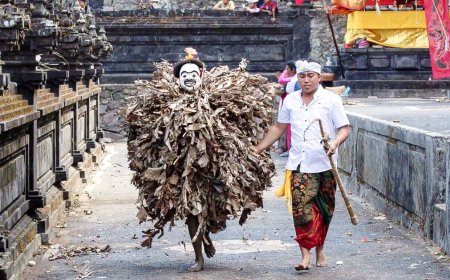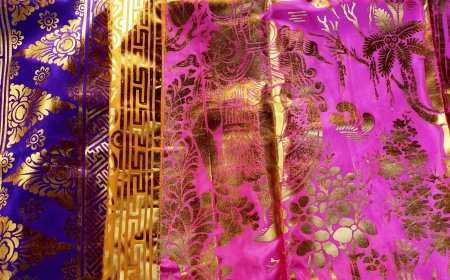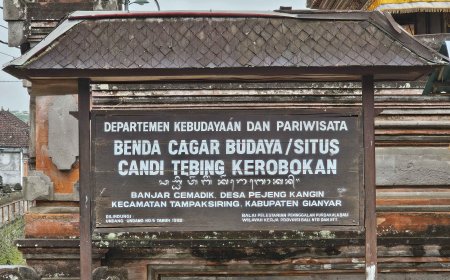The Mystery of the Sacred Snake Cave at Tanah Lot Temple: Mystical Life and Local Wisdom
Bali is known as the most famous island in the eyes of foreign tourists. This island is not only beautiful, but has many myths and mysteries. One that is often talked about by travelers is the sacred snake in a cave at Tanah Lot Temple. If you have ever visited, of course you have also seen this black and white snake there. Reporting from various sources, this snake is actually very venomous but, does not endanger the visitors who come. I wonder why? Check out the following facts!
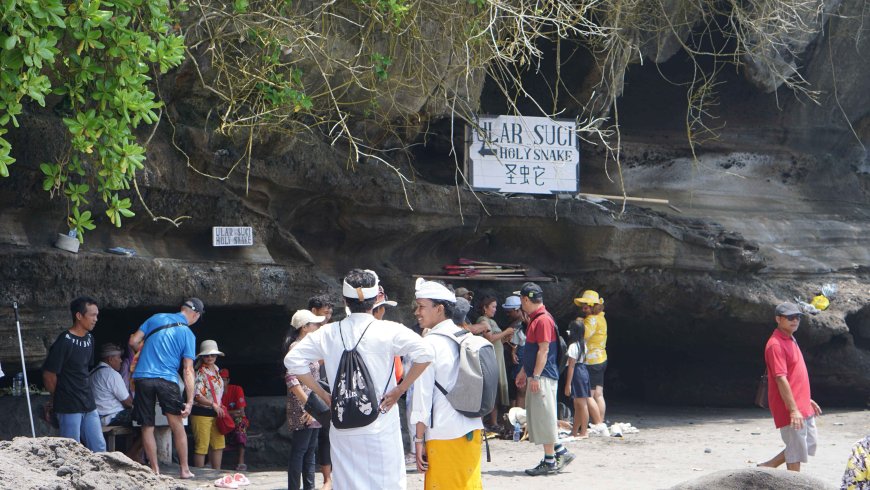
Let's put aside the eye-pleasing beauty of Tanah Lot for a moment. In Tanah Lot itself there is a temple that stands in the middle of a large rock. Tanah Lot is very famous for its holy water. It is said that the water emerges from the large rock. Uniquely, even though it is in the middle of the ocean, the water that emerges is a freshwater spring. By the Hindu community, the water is considered a bearer of blessings. It is not surprising that every day there are people who perform prayers at the temple, while bringing crops, and end by drinking or washing their faces with the holy water there. Tanah Lot is not only known for the Tanah Lot Temple, which sits right on top of a reef in the middle of the sea, mesmerizing local and foreign tourists. But it is also famous for its holy snake. So it is not surprising that tourists who come not only enjoy the scenery but also see firsthand the existence of the holy snakes where these snakes live in a cave located on the lower edge of the temple.
With a depth of up to five meters, this cave is certainly well known by people, especially Hindus in Bali. When entering this place, the Holy Water Cave offers stunning views all around. It is called 'Holy Water' because it is said that this cave can drain holy water from the middle of the sea. Inside this cave, there is a statue with a height of approximately half a meter in the form of Ida Pedanda Danghyang Dwijendra. This figure is a priest who is doing worship at this location. In the cave every visitor can drink the holy water or just to wash their hands and face which is believed to have many benefits in which one of them is believed that this holy water can cure several diseases that are being suffered or even for those who want to have children, by drinking holy water in this cave is believed to be given children. Every visitor who comes will not be charged, only there is a bounty box where if there are visitors who wish to donate voluntarily for the maintenance of this place.
For the people of Bali, the snake in Tanah Lot Temple is familiar. The snake with black-white or poleng stripes is believed to be the holy snake that guards the Tanah Lot Temple and is commonly called Duwe. The existence of the holy snake itself can be witnessed by tourists by simply giving voluntary punia funds in a cave which is certainly guarded by a snake handler there. In the cave marked "Ular Suci/Holy Snake", visitors and tourists can witness and even touch the sacred snake, a type of flat-tailed sea snake with the scientific name Bungarus candidus directly. Bungarus candidus itself is a type of venomous snake from the elapidae tribe and is one of the most venomous snakes in the world. "According to stories from ancient times, the venom of the sacred snake is very deadly," said Jero Mangku Sinta, Pemangku at Pura Luhur Tanah Lot. Despite the deadly venom, until now Mangku Sinta said that no one has ever been bitten by either a handler or a tourist. Because indeed the sacred snake will not bite as long as he feels safe and comfortable. "What I know and have heard so far, until this moment there has never been anyone bitten by the holy snake, even though it is said to be very venomous. Whoever is bitten will meet his death in an instant.".
The sacred snake has an average size of 1-2 meters as an adult with a white-gray and black mottled pattern. The tip of the tail is slightly flattened which is useful for swimming in the sea. According to research, one of them is of the erabu or sea krait species of the family Elapidae, subfamily Laticaudinae and genus Laticauda. All are venomous species. Data shows that there are eight species of erabu in nature. But it is not yet known specifically about the species in Tanah Lot. However, erabu contains a strong neurotoxic venom, which can cause lethargy, paralysis, convulsions, and death if not treated immediately. The venom is three times that of a cobra. The Erabu in Tanah Lot is similar to the Laticauda laticaudata found in Sri Lanka, India, Myanmar, Thailand, Philippines, Japan, China, Andaman Islands, Fiji, Australia and Indonesia. At the beginning of the story, there was no intention of making this sacred snake into a show in the Tanah Lot Temple area. The snake has been known since the 1970s and why it is tame remains a mystery to this day.
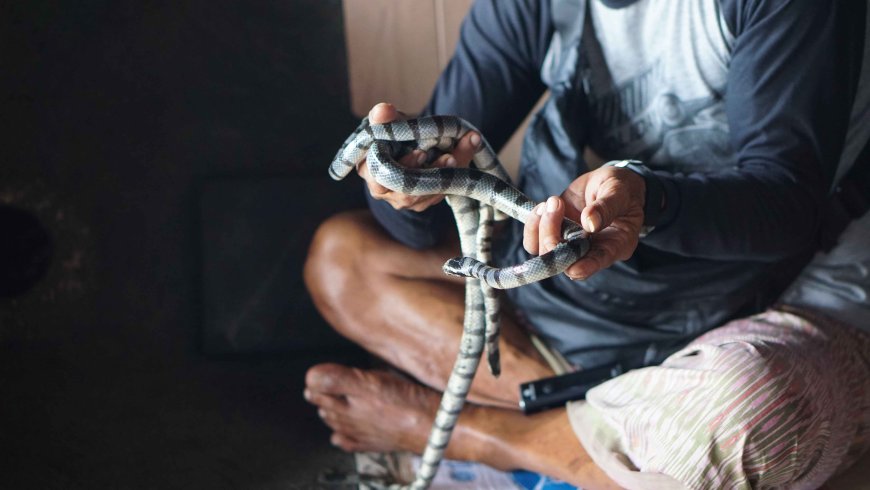
Sacred Snake at Tanah Lot Temple Cave (Photo Source: Personal Collection)
If we talk about the history of the legend, the snakes in this cave can be tamed because they are the incarnation of Dang Hyang Nirartha's magic shawl that turns into a snake to guard the temple in Tanah Lot. The Tanah Lot temple was legendarily built by a wandering brahmin from Java, Danghyang Nirartha, who succeeded in strengthening the Balinese people's belief in Hinduism and built the Sad Kahyangan in the 16th century. At that time, the ruler of Tanah Lot named Bendesa Beraben was jealous of him because his followers began to leave to follow Danghyang Nirartha. Bendesa Beraben then told Danghyang Nirartha to leave Tanah Lot. Danghyang Nirartha agreed, but before that he moved the boulder to the middle of the beach (not the middle of the sea) and built a temple there, including turning his shawl into a snake guarding the temple. This snake is believed by many local people to still exist today. But strangely, there is no trace of the snake nesting or breeding in the cave. When the tide rises during the day and submerges the cave, the snakes will leave and when the tide recedes, the snakes will return to the cave. Due to the sacredness of this snake, further research on the snake is not permitted. So, there is still a lot of mystery surrounding the presence of the sacred snake.
Moreover, Mangku Sinta said that before the 1960s, the sacred snakes in Tanah Lot Temple could number in the hundreds. Even during pujawali the snakes would slither around the temple freely. "The snakes will roam freely, and they are very tame. So people who pray are also not afraid because if we don't disturb the snakes then the snakes won't disturb us either. So we can coexist," said Mangku Sinta. But after tourism grew rapidly, especially in the Tabanan area, slowly the existence of the sacred snake began to decrease in number. In fact, it is now very difficult to find holy snakes roaming around like in the past and it is not uncommon for Mangku Sinta to see unlucky holy snakes who have to die. The dwindling population of the sacred snakes in Tanah Lot Temple is believed to be due to the exploitation of the snakes for business. The sanctity of the snake has been eroded by business interests so that now the snake population is reduced, which of course this will become pros and cons among the community.
The Sacred Serpent Cave is not only associated with mystical beliefs, but also reflects local wisdom in maintaining the balance of nature and spirituality. Balinese Hindus believe that maintaining a balance between humans, nature, and sacred spirits is the key to achieving happiness and harmony in life. The importance of maintaining this balance is reflected in the rituals performed at Tanah Lot Temple, including the ceremony performed at the Sacred Snake Cave as well. Stakeholders and Hindus engage in a series of prayers, dances and offerings as an expression of gratitude and respect to God Almighty. The Holy Snake Cave is not only a sanctified place, but also a spiritual tourism destination that attracts many visitors from various parts of the world. While enjoying the natural beauty around Tanah Lot Temple, visitors have the opportunity to see one of the strong local wisdoms in this place. The importance of maintaining a balance between spiritual and material life is a universal message that can be learned by anyone who visits the Holy Snake Cave. The combination of natural beauty, mystical beliefs, and local wisdom makes Tanah Lot Temple an enchanting place and provides an unforgettable experience for every visitor who seeks peace and wisdom in the midst of a busy life.
